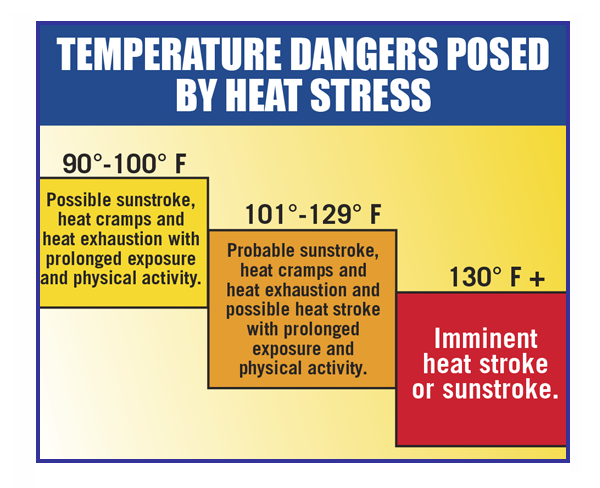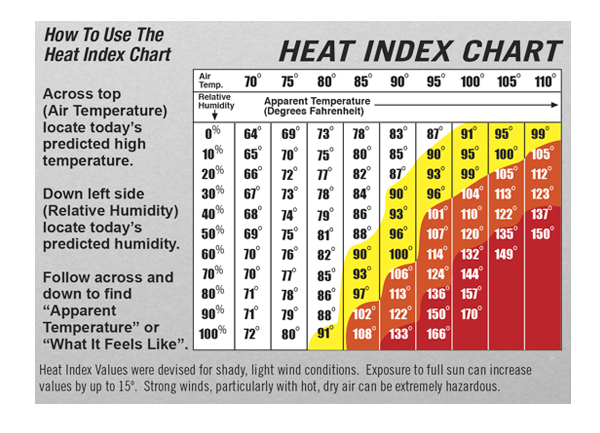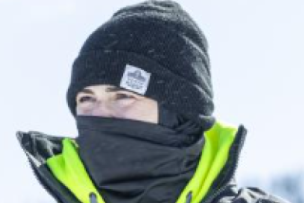THE BODY IS 60-70% WATER
WATER — Recommended intake:
• 13 cups (men) a day
• 9 cups (women) a day
For hotter environments and/or strenuous activity, increase the intake required.
Source: Water
ELECTROLYTES — Recommended intake:
6-10 oz. every 15-20 minutes during strenuous activity, especially in hot environments.*
*Source: Role of Carbohydrate-Electrolyte Fluid Replacement in the Industrial Environment. Human Performance Laboratory, University of Alabama.
CONSEQUENCES OF FLUID LOSS AND
NEGLECT OF FLUID BALANCE
2% - Impaired performance
4% - Capacity for muscular work declines
6% - Heat exhaustion
8% - Hallucination
10% - Circulatory collapse and heat stroke
HEAT AWARENESS
Knowledge for your safety
Safety Tips
- Environments of 90°F or above: Use extreme caution, especially during strenuous activity.
- Acclimate: Allow the body to adjust to high-heat, high-humidity environments.
- PPE Clothing: PPE is necessary but can greatly increase risk of heat stress; therefore, monitor yourself continuously.
At 81°F and above, experts recommend spending no more than 15 minutes of any one hour in an impervious suit unless cooling is provided or wearing a heat stress monitor.
- Thirst and/or Sweat: These are NOT ALWAYS dependable gauges for proper hydration or fluid intake.
- Know the Symptoms: Be familiar with heat stroke, heat exhaustion and heat cramps to respond quickly. (Review Heat Illnesses below.)
- Prevention: Preventing a heat stress injury is much easier than recovering from the injury. Drink fluids and replace electrolytes on a regular basis throughout the day.
HEAT ILLNESS
Symptoms and responses to unprotected heat exposure:
Sunburn: Redness and painful skin; swelling of skin, blisters, fever and headaches are typical in severe cases.
Response: Ointments for mild cases. DO NOT break blisters. If they do break, apply dry, sterile dressing. For severe cases, consult a physician.
Heat Cramps: Painful muscle spasms, usually in the legs and abdomen. Possible heavy sweating.
Response: Apply firm pressure on cramping muscles, then gently massage to relieve muscle spasm. Give sips of Sqwincher every 15 minutes.
Heat Exhaustion: Heavy sweating, weakness, pale and clammy skin, nausea, low blood pressure, rapid pulse, fainting and possible vomiting.
Response: Stop exertion, move to a cool spot and drink Sqwincher every 15 minutes for an hour. If victim vomits, seek immediate medical attention.
Exertional Heat Illness: Stuporous appearance, tired, nausea with possible vomiting. Unsteady gait, heavy perspiration, dehydrated with high body temperature (up to 104°F), often accompanied by headache, rapid respiration and pulse.
Response: Cease exertion and promptly cool body exterior. Initiate replacement of fluids – water first, then Sqwincher. If victim cannot retain fluids, transport to hospital.
Heat Stroke: High body temperature (105°F or higher), hot, red and dry skin, strong rapid pulse, possible unconsciousness.
Response: Heat stroke is a severe medical problem. Move victim to cooler area and reduce body temperature with cold bath or sponging. Use fans and air conditioners. Get victim to hospital – DELAY CAN BE FATAL. DO NOT GIVE FLUIDS.









Talk to Us!
Leave a reply
Your email address will not be published. Required fields are marked *